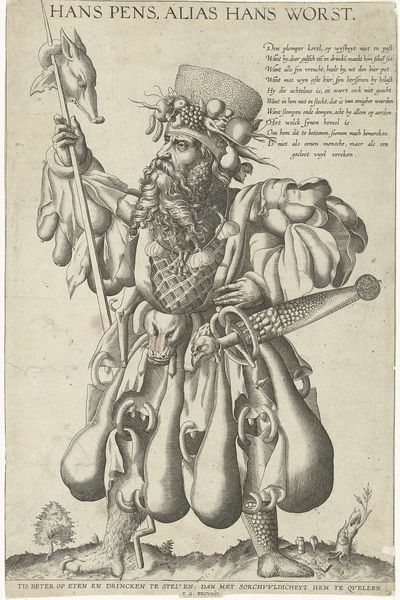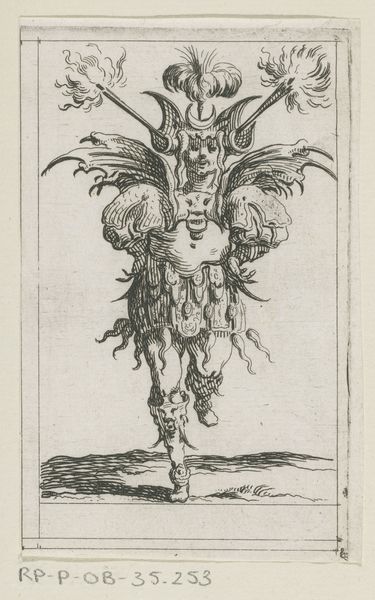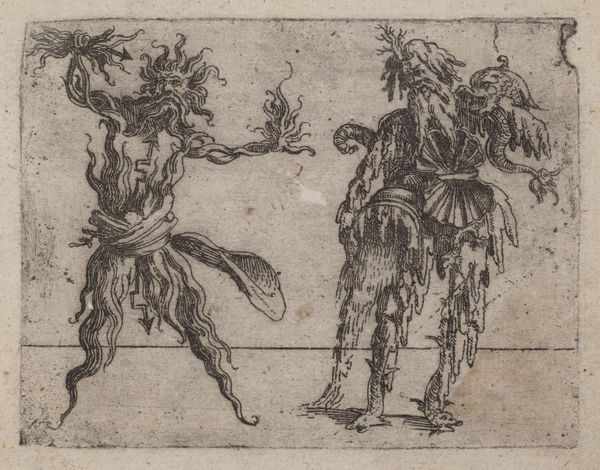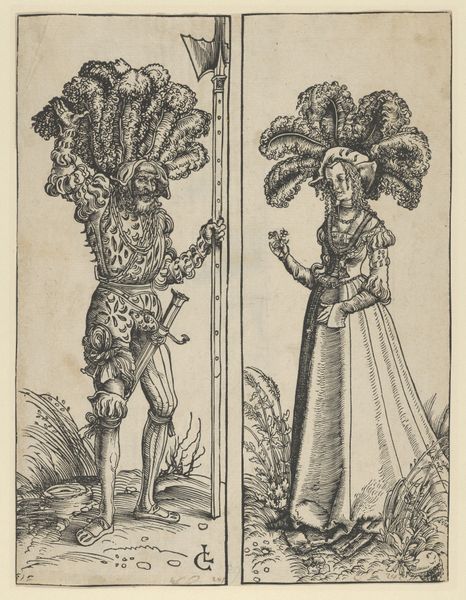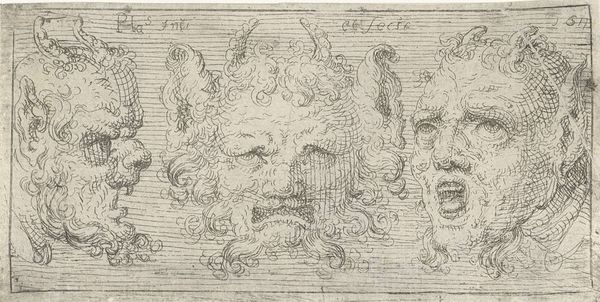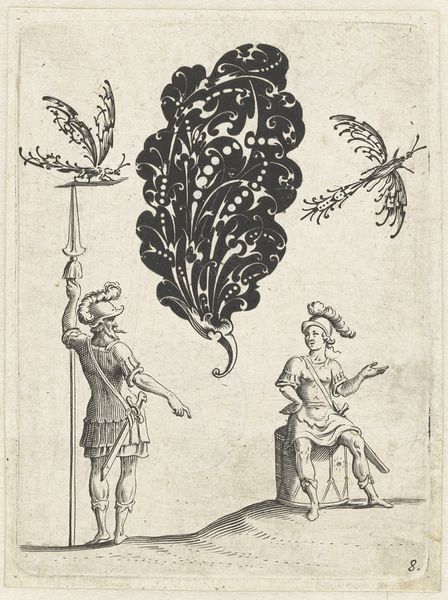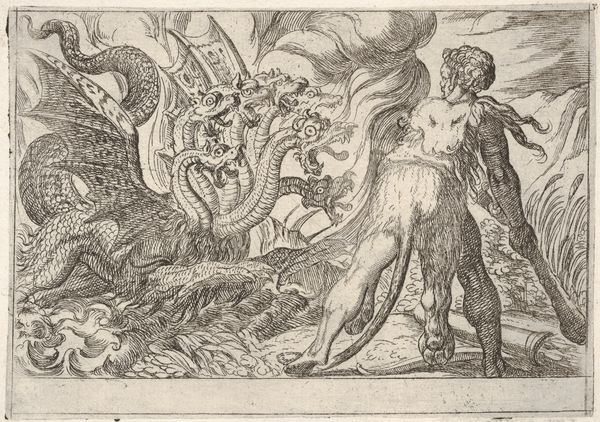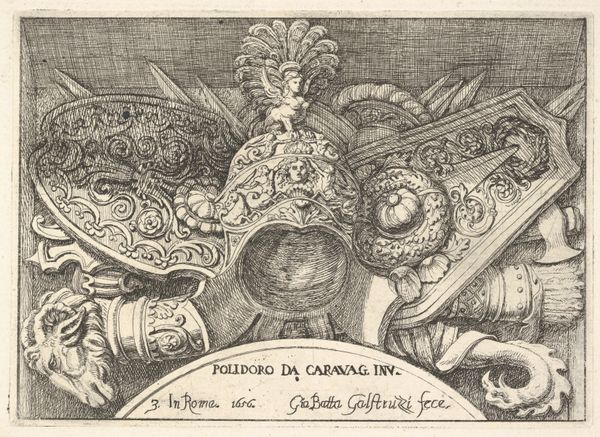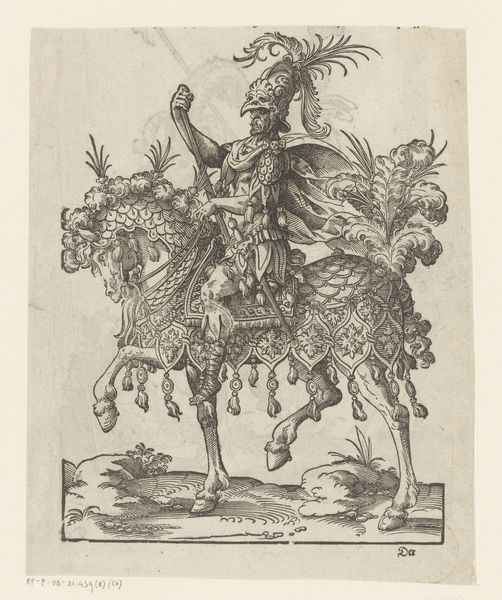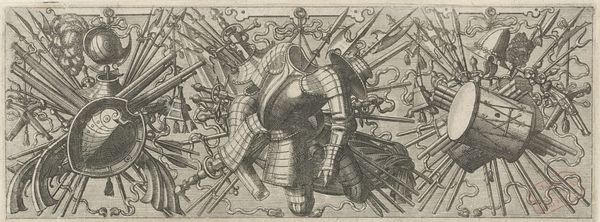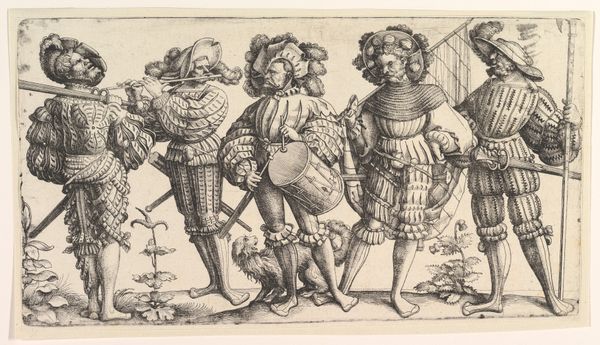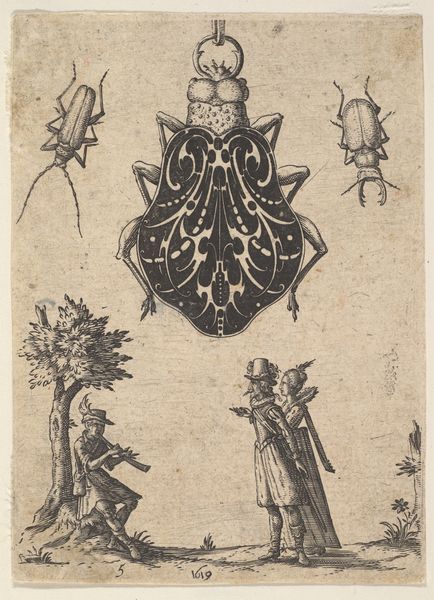
Autumn and Winter: two heads made from flora typical of those seasons 1575 - 1585
0:00
0:00
drawing, print
#
portrait
#
drawing
# print
#
mannerism
Dimensions: Sheet: 6 11/16 × 9 1/8 in. (17 × 23.2 cm)
Copyright: Public Domain
This engraving, made in the style of Giuseppe Arcimboldo, presents two heads, "Autumn" and "Winter," ingeniously composed of seasonal flora. In sixteenth-century Europe, such composite heads served as witty allegories, often commissioned by wealthy patrons to showcase their cultivated knowledge and control over the natural world. "Autumn," brimming with fruits and vegetables, embodies abundance and harvest, while "Winter," formed from bare branches and gnarled wood, symbolizes dormancy and hardship. The image speaks to the cultural preoccupation with cycles of nature and the dependence of society on agricultural bounty. These images aren't just whimsical creations; they are loaded with meaning that reflects the social and economic structures of their time. These images would have been circulated in print and celebrated at court. Art historians delve into period literature, scientific treatises, and social records to decipher these visual codes, revealing the intricate connections between art, culture, and society. Through such research, we discover how these works engage with and reflect the values of their time.
Comments
No comments
Be the first to comment and join the conversation on the ultimate creative platform.
